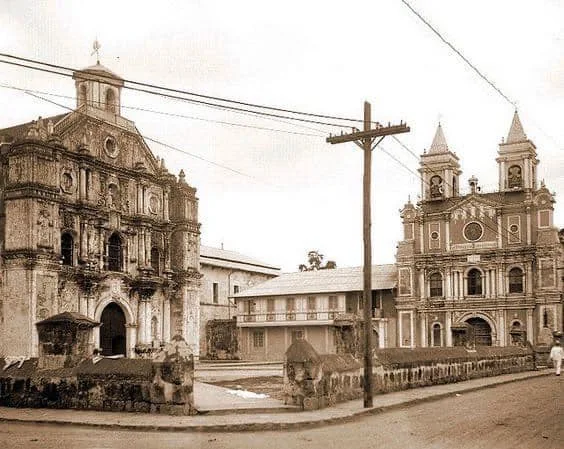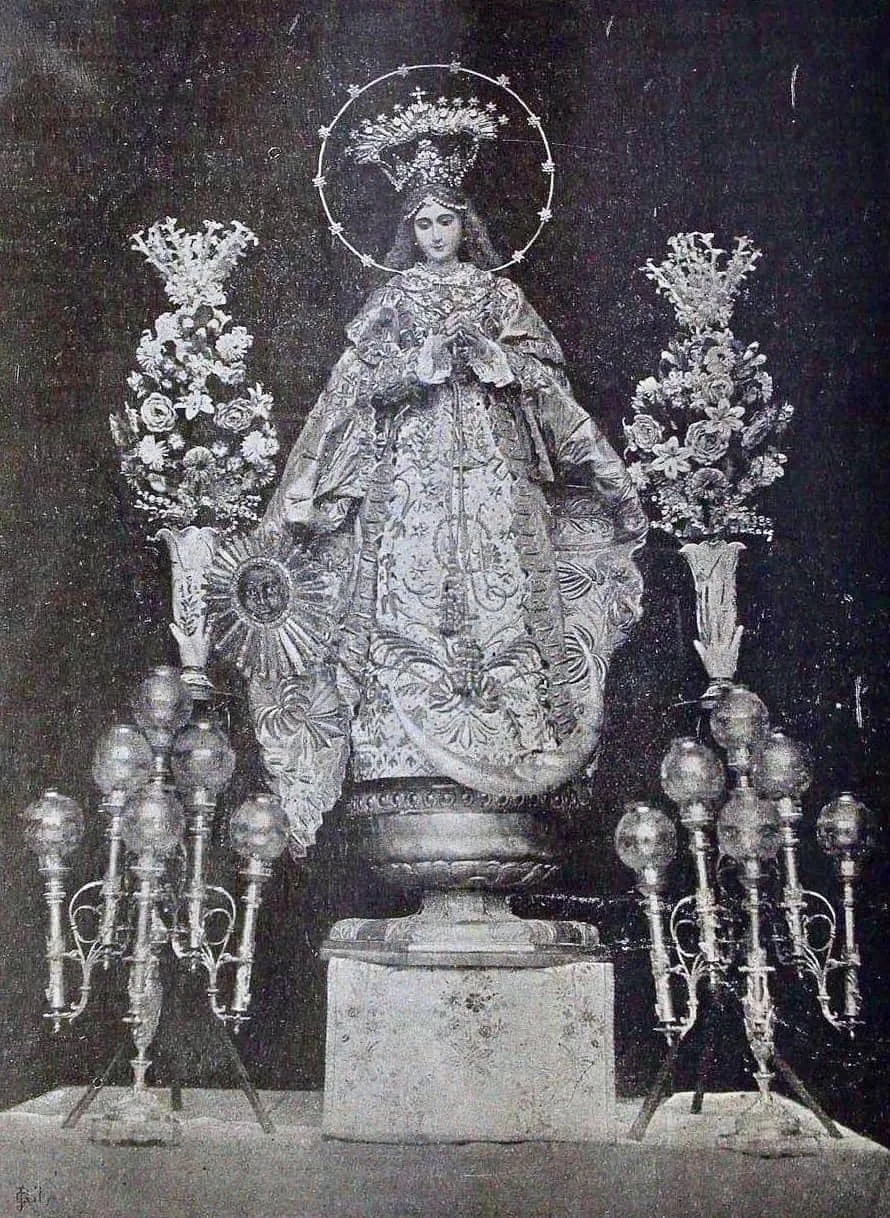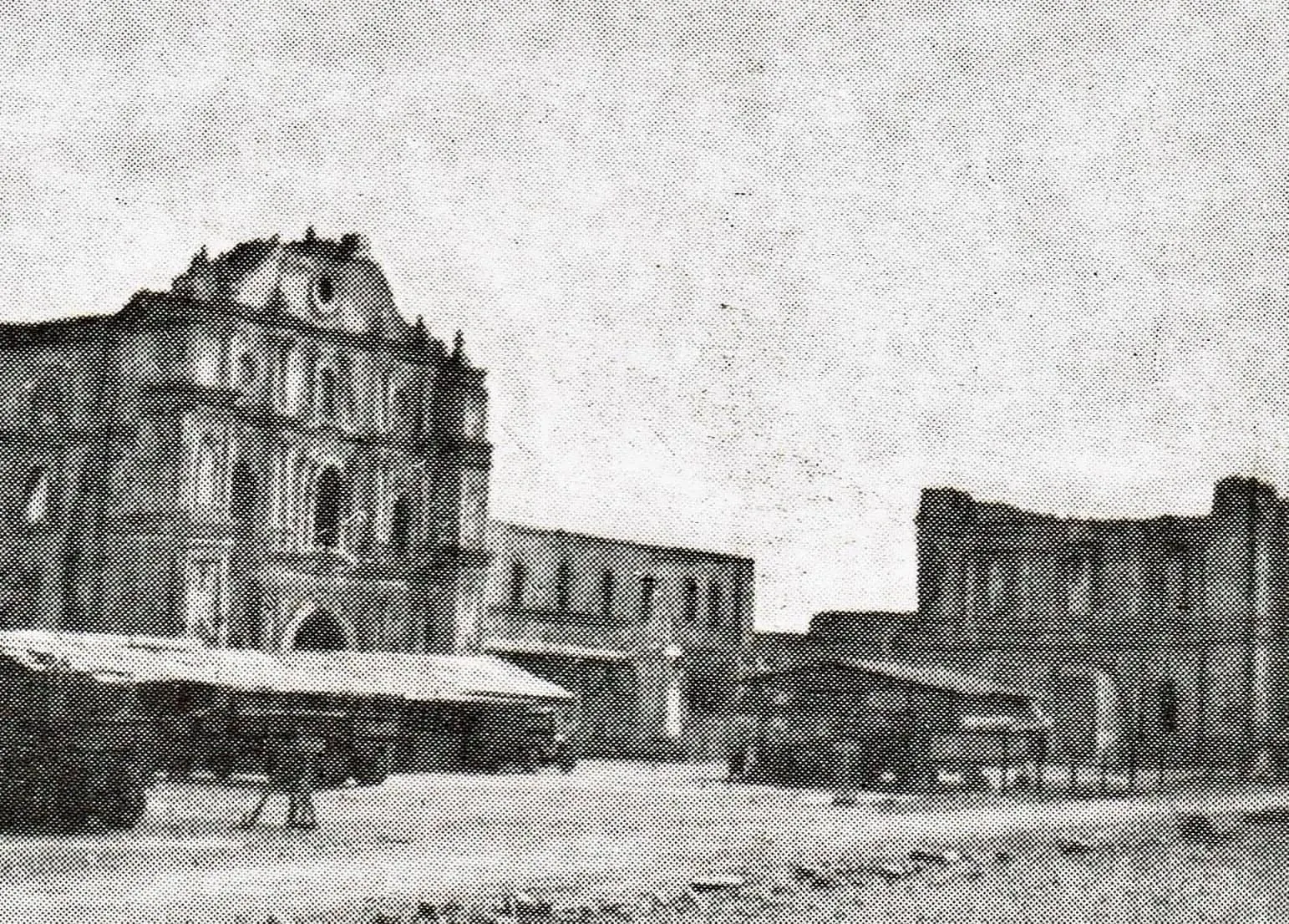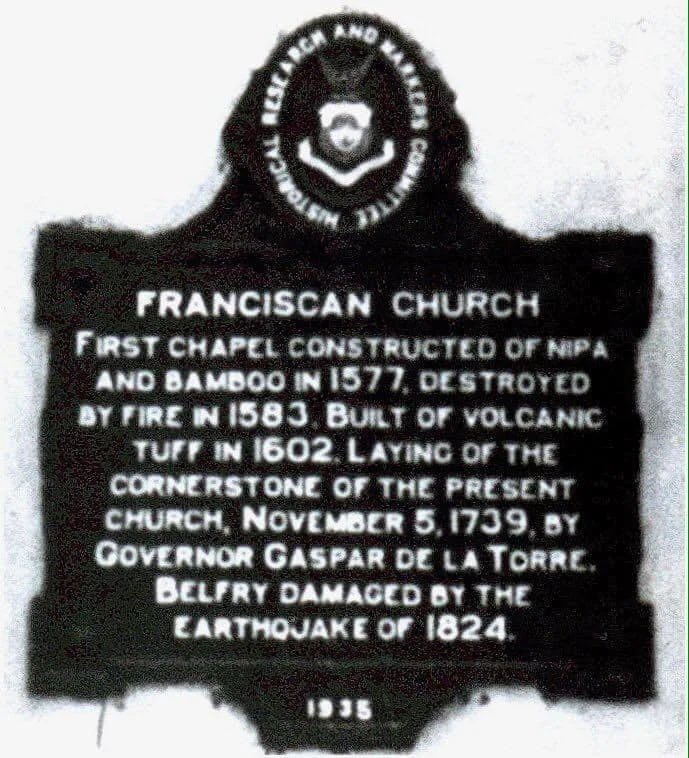The Santuario de San Antonio de Padua in Intramuros, Manila
 |
| The Franciscan patio by Fernando Brambila |
Iglesia y Convento de la Nuestra Señora de los Angeles de los Padres Franciscanos Descalzos
Santuario de San Antonio de Padua
Intramuros, Manila
 |
| The Franciscan Patio |
The second religious order to arrive in the Philippines was the Order of the Friars Minor or better known as the Franciscans. Tasked to help the Augustinians in evangelizing the new colony since they first set foot in 1577, they were responsible in establishing the towns along the Laguna de Bai, northern Nueva Ecija, the districts of El Principe and Infanta, Tayabas, and the whole Bicol peninsula. Later on, they also assumed the administration of Samar and Leyte from the Jesuits. All of this extensive mission areas were governed from their mother house in Intramuros.
 |
| Facade of the church |
 |
| View of the sanctuary from the nave. |
 |
| The churrigueresque main retablo |
Being the second to arrive, the Franciscans were able to acquire a more decent plot of land at the eastern end of Calle Real. This plot of land was divided in two - half for a hospital catering to the natives which would later become San Juan de Dios Hospital, and the other half for their mother house. The church, which was first made of light materials, was dedicated to Our Lady of the Angels of Portiuncula. This church was destroyed during the great fire of 1583. It would take two decades for a church of stone to be built which was inaugurated in 1602.
 |
| Side chapel attached to the church where the fabled La Purissima Concepcion is enshrined |
 |
| The fabled La Purissima Concepcion of the Franciscans |
In 1618, the chapel of the Vererable Orden Tercera was built perpendicular to the church and convent of the Franciscan First Order. These twin churches gave the Franciscan patio a distinct character inside the walled city. Both the structures were badly damaged during the earthquake of 1645. The ruinous church was continually used until a new church was built starting 1738, nearly a century after the earthquake.

Side retablo of San Antonio de Padua, center of the Tuesday devotions 
Image of St. Anthony. Its devotion transferred to Sampaloc, Manila

Filipino devotion to St. Anthony
This 18th century church was handsomely built, rose-colored, and with a retablo-like four-tiered facade. It had a belfry attached to the left side of it, which would later crumble in 1824, never to be rebuilt. The church featured a Churrigueresque main retablo where relics of the Thirteen Martyrs of Japan led by San Pedro Bautista were enshrined. Attached to the gospel side was a Lady Chapel where the famed La Purissima Concepcion is enshrined. This image was the center of festivities during the first Sunday of December fiesta in Intramuros.
 |
| View of the church from today’s Liwasang Bonifacio with the moat and walls of the city |
When the Italian-American Franciscans took the place of their Spanish brothers in the Intramuros church, they started propagating the devotion to St. Anthony of Padua. It was the youngest of the weekly devotions of old Manila. The Franciscan church were flocked by devotees donning brown habits every Tuesday. The crowds that this popular devotion drew was comparable to the Fridays for the Nazareno or the Wednesdays for San Jose. A monument was installed in the 1930’s for St. Anthony at the patio of the church because of the magnanimous devotion Manila had for him.
 |
| The church after WWII |
 |
| The shell was mostly intact |
 |
| The Franciscan patio after the war |
WWII came and the church, like most of Intramuros, was shelled. Unfortunately, the Franciscans weren’t able to salvage any important relic from their old church, save for the monument of St. Anthony, and the image of the Virgin at the top niche of the facade which is now kept in Santa Ana. The shell remained largely in tact but the friars decided not to have it rebuilt because of the generous donation of the Ayala Family that provided them with a new church and mother house in Forbes Park. The property was sold off and later on became the site of the Mapua Institute of Technology.
 |
| Santuario de San Antonio, successor church of San Francisco de Manila |
 |
| The monument of San Antonio from Intramuros, now in Forbes Park |
The recognized successor church of San Francisco is the Santuario de San Antonio. However, the friars deem it not aligned with their vow of poverty to stay in the enclave for the rich. And so they moved their mother house to the old Santuario de San Pedro Bautista in Del Monte, Quezon City. The monument to San Antonio stayed in Forbes Park, while the Tuesday devotion carried on and flourished in Sampaloc, Manila.
_________________
References:
1. The Convents of Manila by Pedro Luengo
2. Almanac for Manileños by Nick Joaquin
3. Intramuros of Memory by Jaime Laya
4. Ciudad Murada by Jose Victor Torres
(C) text by Lorenzo Búkas -



No comments:
Got Something to Say? Thoughts? Additional Information?